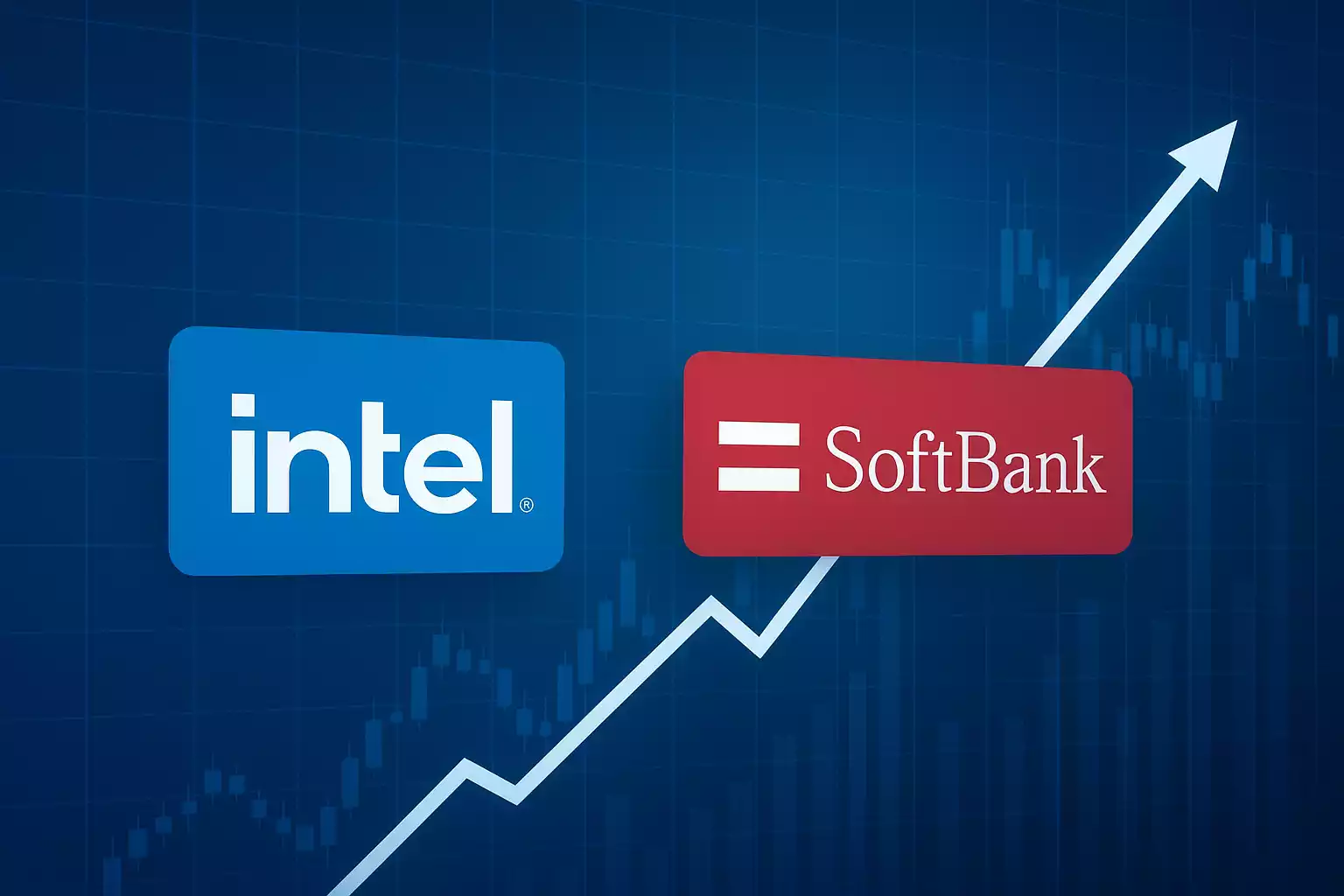Physical Address
304 North Cardinal St.
Dorchester Center, MA 02124
Physical Address
304 North Cardinal St.
Dorchester Center, MA 02124

The big headline across Wall Street this week is clear: Intel stock rally after SoftBank investment is turning heads in the global tech market. On August 19, 2025, Japanese investment powerhouse SoftBank Group announced a $2 billion investment in Intel, purchasing nearly 2% of the company at $23 per share.
The news instantly lit up trading floors, sending Intel’s stock price up by more than 5% in pre-market trading. For Intel, which has struggled in recent years, this sudden confidence boost comes at a crucial moment. For SoftBank, the move strengthens its growing footprint in artificial intelligence and semiconductor infrastructure.
So, what makes this investment such a big deal? Let’s break it down.
SoftBank isn’t new to bold technology bets. From early stakes in Alibaba to owning ARM Holdings, SoftBank has repeatedly shown its appetite for shaping the future of global tech. In recent years, it has shifted focus toward AI infrastructure and semiconductors, making Intel a natural target.
Some key reasons behind this Intel stock rally after SoftBank investment include:
SoftBank didn’t demand a board seat or special privileges, signaling that this is a confidence investment rather than a controlling move.
Intel has not had an easy ride in the last few years. Once the undisputed leader in processors, the company fell behind Nvidia and TSMC in both AI chips and advanced semiconductor manufacturing.
Despite this downturn, Intel remains a critical player for U.S. semiconductor independence. Washington has already been considering converting CHIPS Act subsidies into equity, potentially making the U.S. government one of Intel’s largest stakeholders.
That’s why Intel stock rally after SoftBank investment is more than just about money—it’s about ensuring Intel survives as a counterbalance to Asian dominance in chipmaking.
The market’s immediate reaction showed how differently investors viewed the deal.
While Japanese investors were cautious, Wall Street clearly saw this as a short-term confidence booster for Intel. The long-term impact, however, depends on how well Intel can execute its AI-focused turnaround strategy under CEO Lip-Bu Tan.
This Intel stock rally after SoftBank investment also has ripple effects across the AI and semiconductor industries.
For the U.S., this is also about semiconductor sovereignty. A strong Intel reduces dependency on Asian supply chains, which is vital in today’s geopolitically tense environment.
The Intel stock rally after SoftBank investment is more than a market blip—it’s a story of resilience, strategy, and geopolitics. While $2 billion alone won’t solve Intel’s problems, the symbolic confidence from a global investor like SoftBank could help reshape perceptions.
For investors, this deal signals that Intel isn’t out of the game yet. For SoftBank, it cements its position as a global AI powerhouse. And for the U.S. government, it’s another reason to ensure Intel remains strong in the race for semiconductor dominance.
Whether this marks the start of Intel’s comeback or just a temporary lift will depend on execution, leadership, and continued support from both private and public investors.
Intel stock rallied after SoftBank investment because the $2 billion deal signaled renewed confidence in Intel’s future. Investors saw SoftBank’s decision to acquire a nearly 2% stake as a major endorsement, especially as Intel works on its AI-focused turnaround strategy.
Following the deal, SoftBank owns about 2% of Intel’s outstanding shares. While it’s not a controlling stake, it shows strategic alignment. This ownership is one reason the Intel stock rally after SoftBank investment was so significant.
By itself, $2 billion won’t solve Intel’s long-term struggles. However, the Intel stock rally after SoftBank investment reflects renewed investor trust. Combined with potential U.S. government support and Intel’s restructuring, this could give the company a stronger path forward.
While Intel stock rallied after SoftBank investment, SoftBank’s own stock dropped about 4% in Tokyo. Investors in Japan often worry about Masayoshi Son’s high-risk bets, and this move was seen as another bold gamble in the volatile semiconductor sector.
The Intel stock rally after SoftBank investment highlights how critical Intel is in the AI and semiconductor race. While Nvidia leads in GPUs and TSMC dominates manufacturing, Intel now has stronger financial backing and political support, which could help it stay competitive.